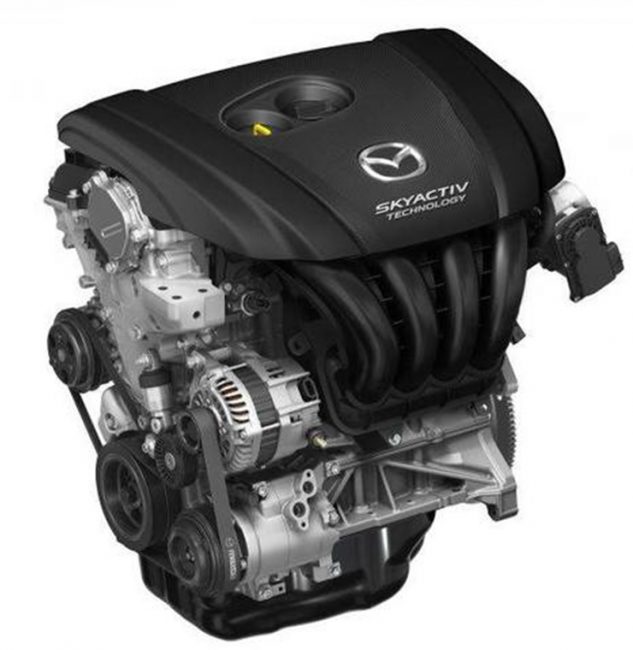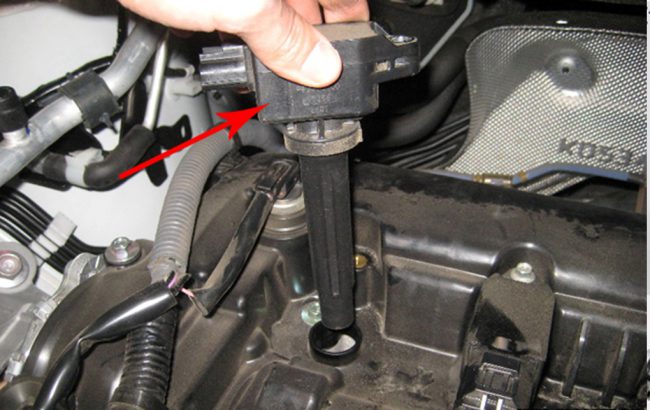
Mazda PY engines
Content
The development of new PY engines was carried out primarily to meet the EURO 6 environmental standards, and the improvement of technical characteristics was already a secondary goal of the developers.
History of the PY engine
This article will focus on the new engines in the Mazda line - SKYACTIV, which include PY-VPS, PY-RPS and PY-VPR power units. These motors are based on the old version of the two-liter MZR engine. However, new models are not just a refinement of previous versions of the engine, but the introduction of new operating principles.
For reference! Japanese automakers have always rejected the ideology of small-volume tubular engines, unlike their European counterparts. This was explained by the fact that turbocharging significantly reduces the resource of engines and increases fuel consumption!
The most global change in the PY series engines is an increased compression ratio - 13, while in conventional engines the average value is 10 units.
Important! According to the developers, these engines are superior to their previous versions in terms of efficiency (30% less fuel consumption) and have increased torque (15%)!
It is worth noting that an increased value of the compression ratio can adversely affect the life of the engine. Indeed, at such values, detonation is formed, which negatively affects the piston group. To eliminate this shortcoming, Mazda has done a tremendous job. Firstly, the shape of the piston has been changed - now it resembles a trapezoid. A recess appeared in its center, which serves to form a uniform ignition of the mixture near the spark plug.
However, by changing only the shape of the piston, it is impossible to achieve complete elimination of detonation. Therefore, the developers decided to build special ion sensors (on the bottom photo) into the ignition coils. With their help, the engine is able to always work on the verge of detonation, while achieving complete combustion of the fuel mixture. The principle of this system is that the ion sensor monitors current fluctuations in the gap of the spark plugs. When the fuel mixture burns, ions appear, forming a conductive medium. The sensor transmits pulses to the electrodes of the spark plugs, after which it measures them. In case there are any deviations, it sends a signal to the electronic control unit to correct the ignition.
To combat detonation, the developers also introduced phase shifters. On early versions of some engines, they used to be, though mechanical (hydraulic). Mazda PY power units were equipped with electronic ones. The exhaust manifold has also undergone changes, which began to carry out an easier removal of exhaust gases.
The cylinder block housing has lost significant weight (as it is made of aluminum) and now consists of two parts.
Technical parameters of Mazda PY power units
For a comfortable perception of information, the characteristics of these motors are presented in the following table:
| Engine index | PY-VPS | PY-RPS | PY-VPR |
|---|---|---|---|
| Volume, cm 3 | 2488 | 2488 | 2488 |
| Power, HP | 184 – 194 | 188 – 190 | 188 |
| Torque, N * m | 257 | 252 | 250 |
| Fuel consumption, l / 100 km | 6.8 – 7.4 | 9.8 | 6.3 |
| ICE type | Petrol, in-line 4-cylinder, 16-valve, injection | Petrol, in-line 4-cylinder, 16-valve, direct fuel injection, DOHC | Petrol, in-line 4-cylinder, 16-valve, direct fuel injection, DOHC |
| CO2 emission in g / km | 148 – 174 | 157 – 163 | 145 |
| Cylinder diameter, mm | 89 | 89 | 89 |
| Compression ratio | 13 | 13 | 13 |
| The piston stroke, mm | 100 | 100 | 100 |
Performance of Mazda PY engines
Due to the fact that this line of engines is highly technological, the quality of the fuel used should be taken very seriously. It is recommended to fill in gasoline with an octane rating of at least 95, otherwise the viability of the engine will decrease several times.
For reference! The higher the octane number of gasoline, the less likely it is to detonate!
Another important nuance is the quality of engine oil. Due to the high compression ratio, the operating temperature, pressure and load on all mechanisms increase, so it is necessary to fill in only high quality oil. Recommended viscosity from 0W-20 to 5W-30. It should be replaced every 7500 - 10000 km. run.
You should also replace the spark plugs in a timely manner (after 20000 - 30000 km), as this directly affects the quality of the fuel mixture and the level of efficiency of the car as a whole.
In general, this line of atmospheric gasoline engines does not have serious problems in operation. Owners note only increased noise during heating and excessive vibration.
The resource of Mazda PY engines, according to manufacturers, is 300000 km. But this is subject to timely maintenance using high-quality consumables. It is worth noting that these engines, due to their modernity, are among the non-repairable ones, that is, in the event of more or less serious breakdowns, the entire unit with all mechanisms is replaced.
Vehicles with Mazda PY engines
And in conclusion of this article, a list of cars that are equipped with these power units should be given:
| Engine index | PY-VPS | PY-RPS | PY-VPR |
|---|---|---|---|
| Car model | Mazda CX-5, Mazda 6 | Mazda CX-5 | Mazda atenza |

